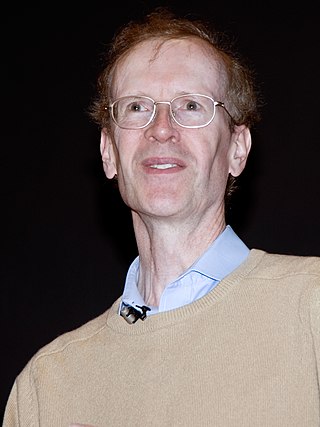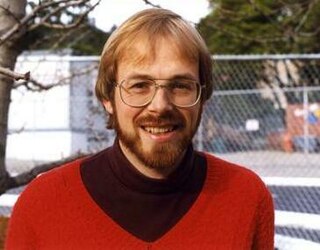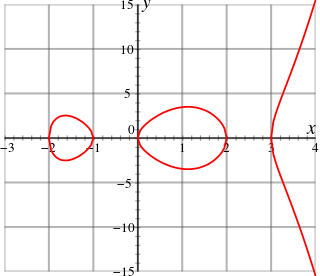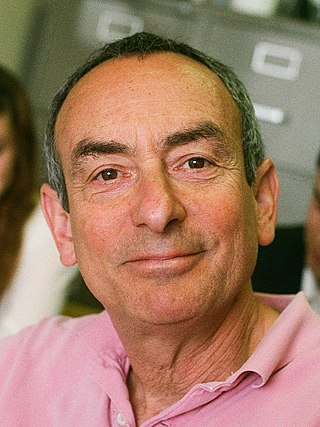Related Research Articles

Sir Andrew John Wiles is an English mathematician and a Royal Society Research Professor at the University of Oxford, specialising in number theory. He is best known for proving Fermat's Last Theorem, for which he was awarded the 2016 Abel Prize and the 2017 Copley Medal and for which he was appointed a Knight Commander of the Order of the British Empire in 2000. In 2018, Wiles was appointed the first Regius Professor of Mathematics at Oxford. Wiles is also a 1997 MacArthur Fellow.
The modularity theorem states that elliptic curves over the field of rational numbers are related to modular forms in a particular way. Andrew Wiles and Richard Taylor proved the modularity theorem for semistable elliptic curves, which was enough to imply Fermat's Last Theorem. Later, a series of papers by Wiles's former students Brian Conrad, Fred Diamond and Richard Taylor, culminating in a joint paper with Christophe Breuil, extended Wiles's techniques to prove the full modularity theorem in 2001.
Gorō Shimura was a Japanese mathematician and Michael Henry Strater Professor Emeritus of Mathematics at Princeton University who worked in number theory, automorphic forms, and arithmetic geometry. He was known for developing the theory of complex multiplication of abelian varieties and Shimura varieties, as well as posing the Taniyama–Shimura conjecture which ultimately led to the proof of Fermat's Last Theorem.
In mathematics, a modular form is a (complex) analytic function on the upper half-plane, , that roughly satisfies a functional equation with respect to the group action of the modular group and a growth condition. The theory of modular forms has origins in complex analysis, with important connections with number theory. Modular forms also appear in other areas, such as algebraic topology, sphere packing, and string theory.
In mathematics, the Birch and Swinnerton-Dyer conjecture describes the set of rational solutions to equations defining an elliptic curve. It is an open problem in the field of number theory and is widely recognized as one of the most challenging mathematical problems. It is named after mathematicians Bryan John Birch and Peter Swinnerton-Dyer, who developed the conjecture during the first half of the 1960s with the help of machine computation. Only special cases of the conjecture have been proven.

Richard Lawrence Taylor is a British mathematician working in the field of number theory. He is currently the Barbara Kimball Browning Professor in Humanities and Sciences at Stanford University.
Ribet's theorem is part of number theory. It concerns properties of Galois representations associated with modular forms. It was proposed by Jean-Pierre Serre and proven by Ken Ribet. The proof was a significant step towards the proof of Fermat's Last Theorem (FLT). As shown by Serre and Ribet, the Taniyama–Shimura conjecture and the epsilon conjecture together imply that FLT is true.

Gerhard Frey is a German mathematician, known for his work in number theory. Following an original idea of Hellegouarch, he developed the notion of Frey–Hellegouarch curves, a construction of an elliptic curve from a purported solution to the Fermat equation, that is central to Wiles's proof of Fermat's Last Theorem.

Yutaka Taniyama was a Japanese mathematician known for the Taniyama–Shimura conjecture.

In mathematics, arithmetic geometry is roughly the application of techniques from algebraic geometry to problems in number theory. Arithmetic geometry is centered around Diophantine geometry, the study of rational points of algebraic varieties.
In mathematics, Serre's modularity conjecture, introduced by Jean-Pierre Serre, states that an odd, irreducible, two-dimensional Galois representation over a finite field arises from a modular form. A stronger version of this conjecture specifies the weight and level of the modular form. The conjecture in the level 1 case was proved by Chandrashekhar Khare in 2005, and a proof of the full conjecture was completed jointly by Khare and Jean-Pierre Wintenberger in 2008.

A modular elliptic curve is an elliptic curve E that admits a parametrization X0(N) → E by a modular curve. This is not the same as a modular curve that happens to be an elliptic curve, something that could be called an elliptic modular curve. The modularity theorem, also known as the Taniyama–Shimura conjecture, asserts that every elliptic curve defined over the rational numbers is modular.
In mathematics, a Frey curve or Frey–Hellegouarch curve is the elliptic curve associated with an ABC triple . This relates properties of solutions of equations to elliptic curves. This curve was popularized in its application to Fermat’s Last Theorem where one investigates a (hypothetical) solution of Fermat's equation
Fred Irvin Diamond is a mathematician, known for his role in proving the modularity theorem for elliptic curves. His research interest is in modular forms and Galois representations.

In number theory, Fermat's Last Theorem states that no three positive integers a, b, and c satisfy the equation an + bn = cn for any integer value of n greater than 2. The cases n = 1 and n = 2 have been known since antiquity to have infinitely many solutions.
Christophe Breuil is a French mathematician, who works in arithmetic geometry and algebraic number theory.

Wiles's proof of Fermat's Last Theorem is a proof by British mathematician Sir Andrew Wiles of a special case of the modularity theorem for elliptic curves. Together with Ribet's theorem, it provides a proof for Fermat's Last Theorem. Both Fermat's Last Theorem and the modularity theorem were believed to be impossible to prove using previous knowledge by almost all living mathematicians at the time.

Barry Charles Mazur is an American mathematician and the Gerhard Gade University Professor at Harvard University. His contributions to mathematics include his contributions to Wiles's proof of Fermat's Last Theorem in number theory, Mazur's torsion theorem in arithmetic geometry, the Mazur swindle in geometric topology, and the Mazur manifold in differential topology.

Kenneth Alan Ribet is an American mathematician working in algebraic number theory and algebraic geometry. He is known for the Herbrand–Ribet theorem and Ribet's theorem, which were key ingredients in the proof of Fermat's Last Theorem, as well as for his service as President of the American Mathematical Society from 2017 to 2019. He is currently a professor of mathematics at the University of California, Berkeley.
Christopher McLean Skinner is an American mathematician and professor at Princeton University. He works in algebraic number theory and arithmetic aspects of the Langlands program.
References
- ↑ "The Presidential Early Career Award for Scientists and Engineers: Recipient Details: Brian Conrad". NSF.
- ↑ "Awards". American Academy of Sciences & Letters. Retrieved 2024-10-27.